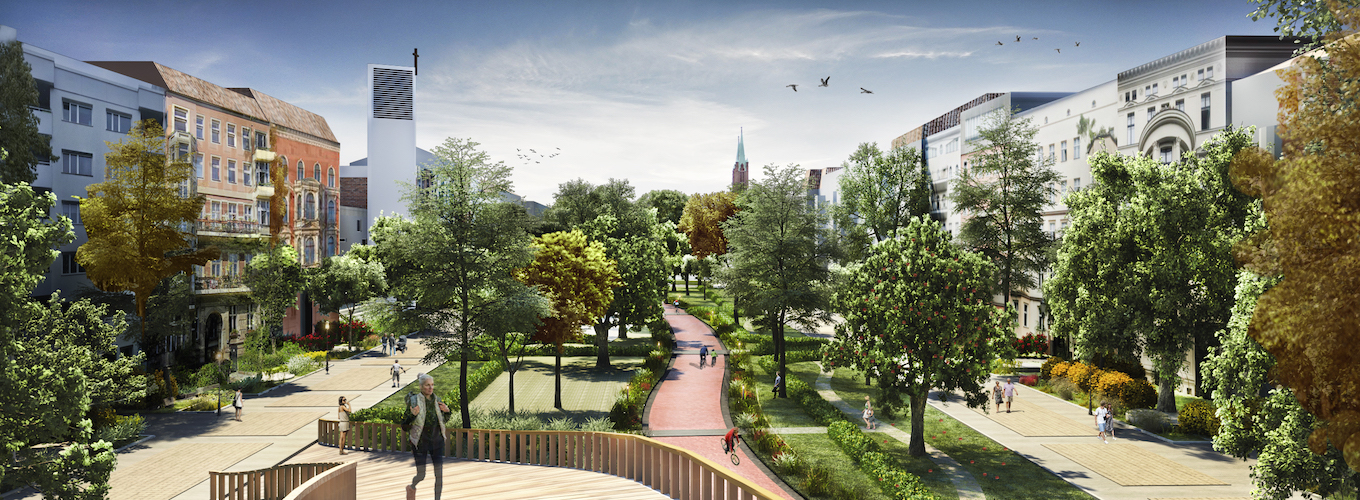
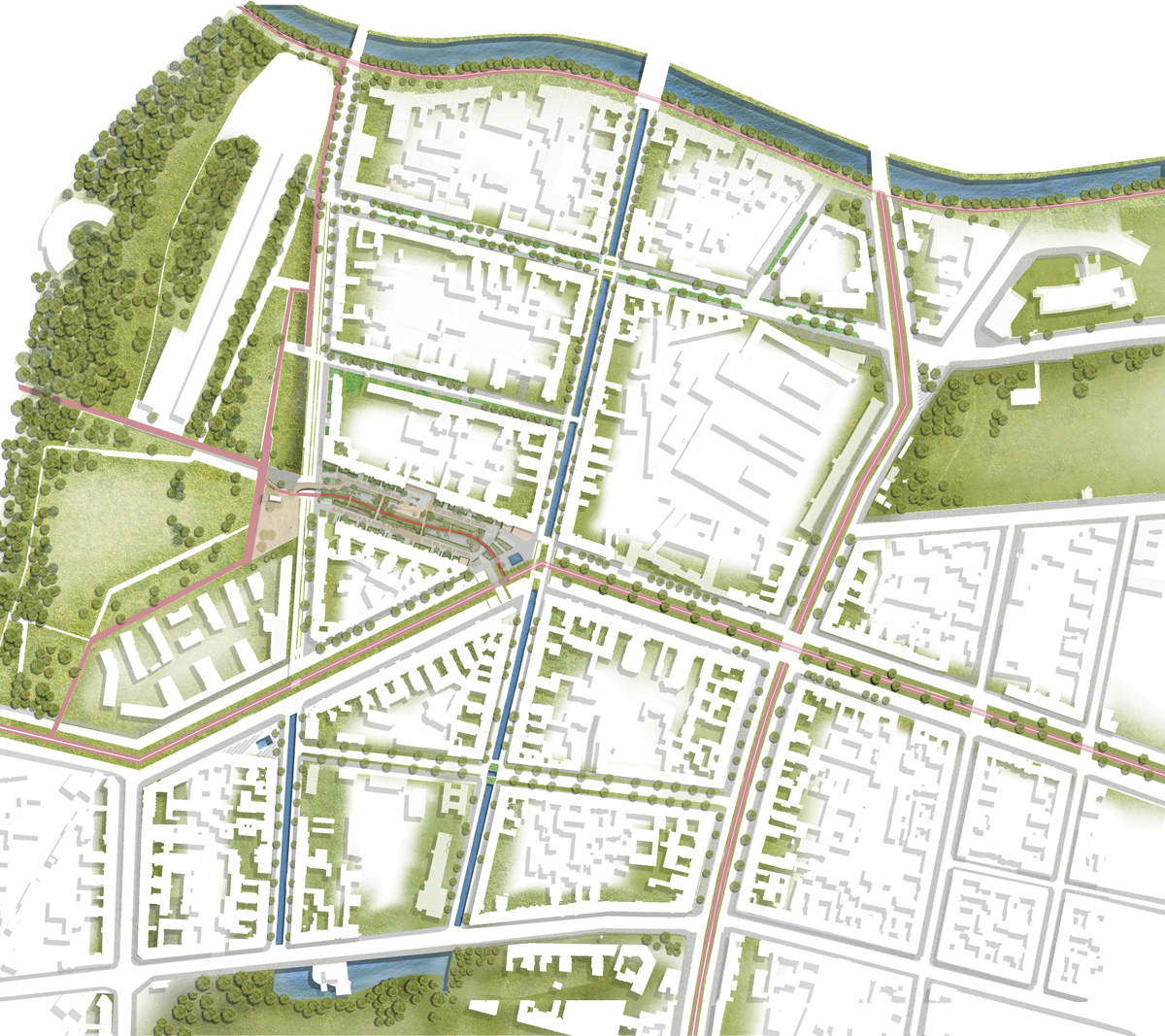
A model district for Kreuzberg, by Gleisdreick Park
An urban parkscape proposes a new level of integration, where modified street profiles connect vegetated areas. It is about human movement, distinct identities, regaining lost spaces.
What first seems like a radical urban idea (tunnels, canals, street-gardens, slow-streets..) begins to gather logic, as the neighborhood gains clarity and connectivity. The un-deep canal is openly aesthetic, yet improves movement, connects landmarks, and mostly importantly, establishes new priorities and an imagination for the city.

Hornstreet: Prototyping Open-Space
A partial reverse to a uncommonly broad cross section, as cyclists meander centrally, they are no longer laterally and doubly squashed.
Cars stand on temporary, taxiing or delivering spots, so the pedestrian is the main player. Two parallel boulevards (Northside, Southside!) encourage strolling. Gardens and public strips exhibit themselves, the private is protected symbiotically by a ‘modern’ drainage-strip-pavement.
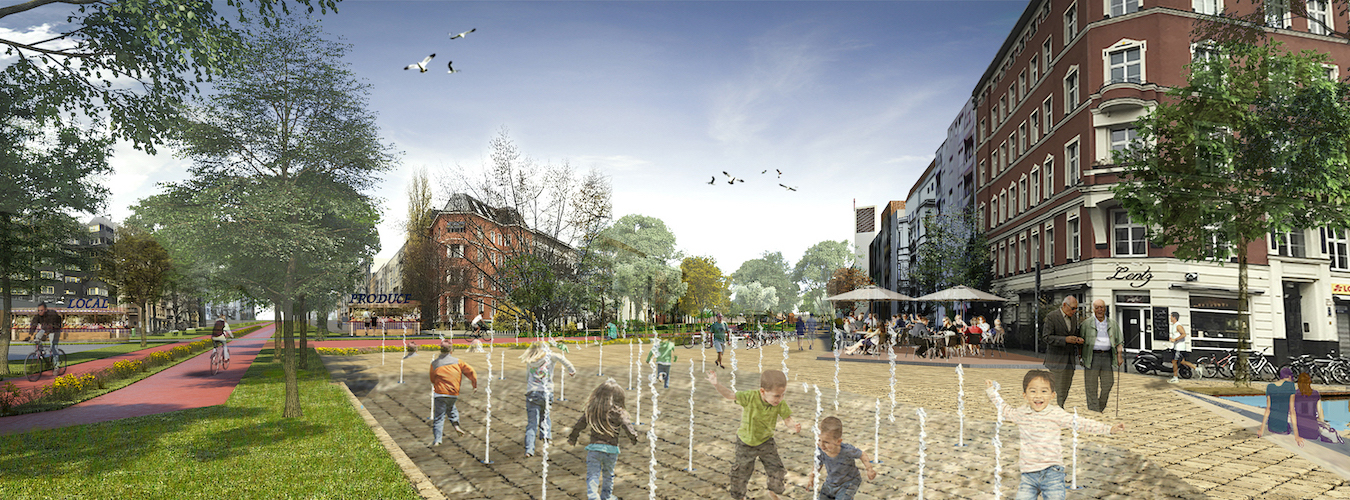
Hornstreet Piazza: water, food, awnings, paths
At the intersection of two main streets, Horn- and Yorkstreet, a large public space emerges as urban features intersect and overlap.
What first seems like a radical urban idea (tunnels, canals, street-gardens, slow-streets) begins to give the neighborhood clarity and connectivity. The undeep canal is ‘aesthetic’, but it improves movement, connects landmarks, and establishes new priorities and a better imagination of the city.
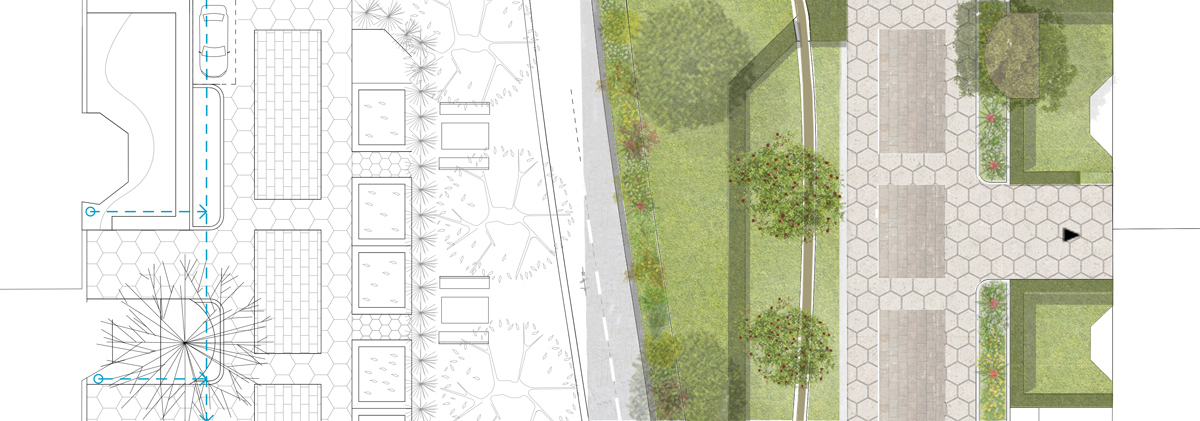
Yes it can. The street needs not a revolution but a refashioning and a cultural cause for both change and preservation. With new movement of people and improved hierarchies between privacy and shared space, residents and their visitors will be engaged.
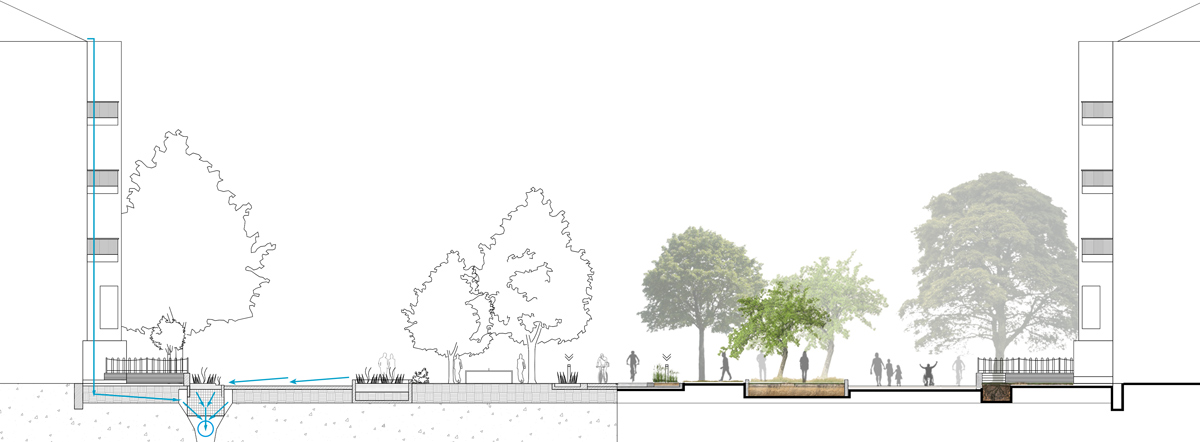
Technical and lyrical stories
Park to footbridge, footbridge to strolling-promenade, promenade to a flanking pergola, pergola funneling back into malleable public space.
The contemporary street is a self-help, productive space for improving, not degrading, our environment, which that was so last century…
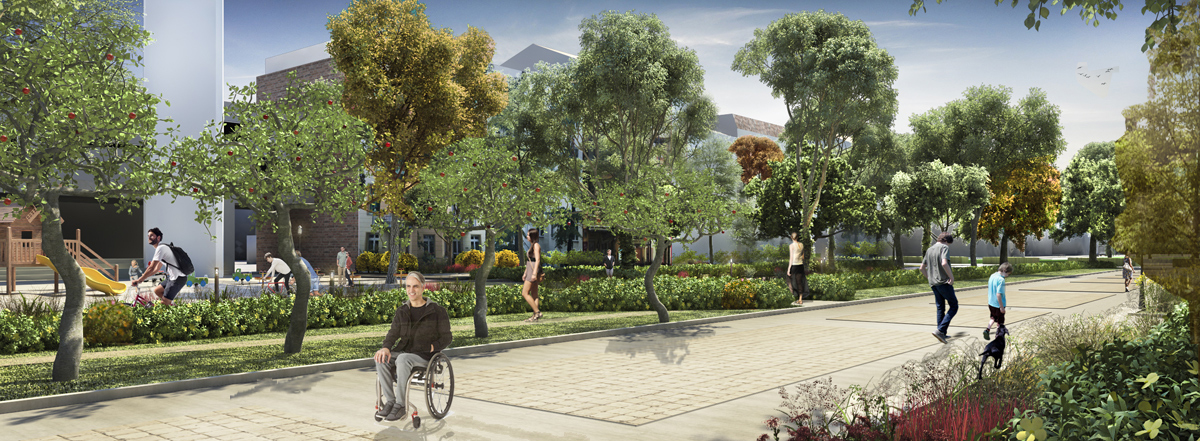
Prototyping strolling, rolling, laying low and being slow.

Cars pass underground and the Großbeerenstreet becomes a canal street, connecting the Spree River and Victoria Park ponds, momentarily paused by recreational fountains at the piazza. Along the city-cycle belt, pedestrians enjoy gastronomy, gardens, and something in between: a local produce food market.
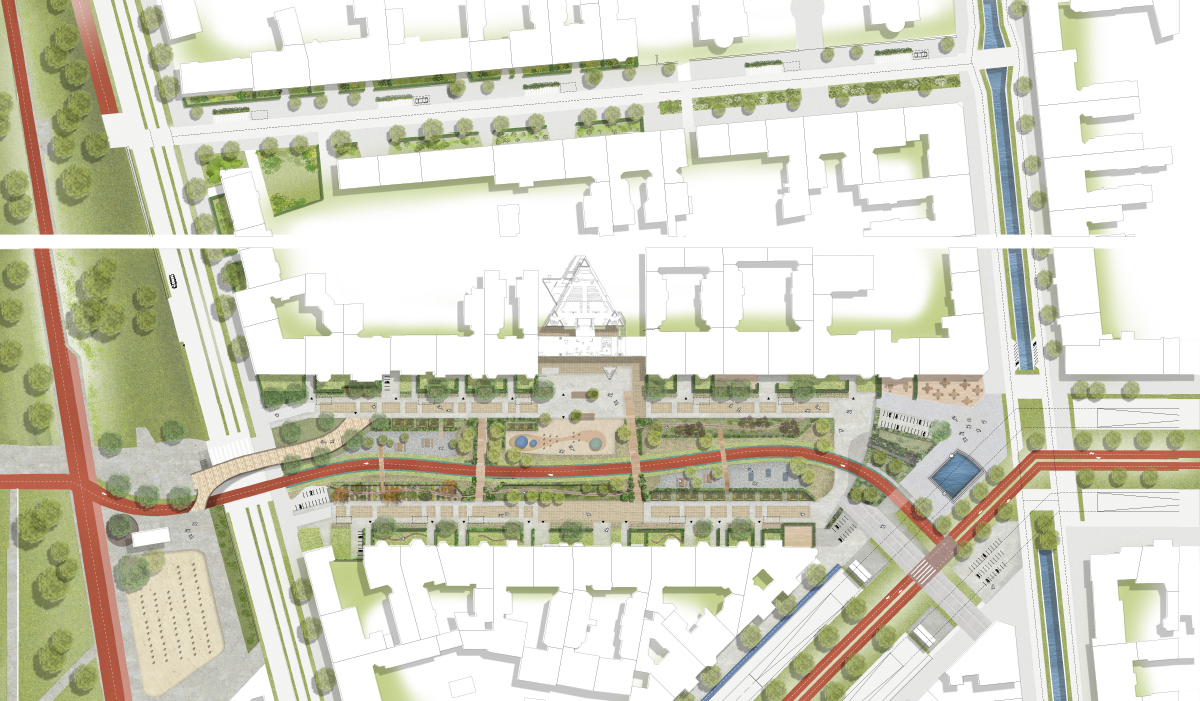
Top center: protestant Christ Church, Hornstrasse 7/8, Architect Klaus Ernst 1963-64
Hornstreet as Space
Open street prototype and model district design
Location
Berlin Kreuzberg, west end of Gleisdreick Park, south of the River Spree